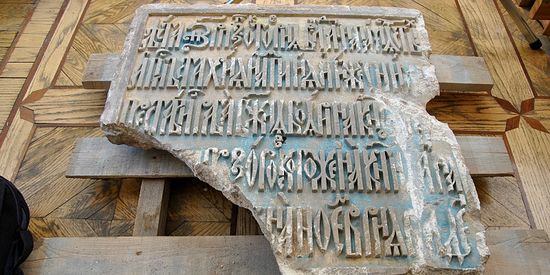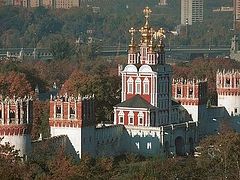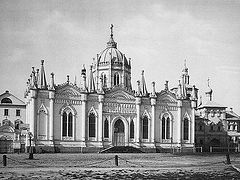Moscow, June 29, 2017
Archaeologists have discovered an ancient seventeenth-century tombstone on Bolshaya Lyubanka Street, along the wall of Sretensky Monastery, belonging to Anna Rtischeva, a confidant of Tsar Peter I “the Great,” reports the site of the mayor of Moscow. The white limestone slab was discovered while laying water pipes as part of the ongoing “My Street” program for improving Moscow streets.
The artifact, found in a trench along the monastery’s wall, is unique in that the plate is not simply white, but is also painted with blue and red. Both the paint and inscription on the 27’’ x 27’’ x 4’’ are well preserved.
Anna Rtishcheva was the representative of a noble boyar family. She married Peter Prozorovsky (1644-1720) very young and lived with the prince for almost 20 years. She died young, at 35 years of age. Peter Prozorovsky never married again and lived as a widower until the end of life.
Peter and Anna’s daughter received a large inheritance from her parents and married Prince Ivan Golitsyn. She was one of the first ladies-in-waiting during the reign of Catherine I.
“To discover a painted gravestone from this time is quite a rarity. It was long thought that they were all white, only because the impermanent paint had wholly faded over time. Traces of red paint on the perimeter of the tombstone were also found. Scientists will be able to determine the exact composition of the paint after they conduct a chemical analysis,” said the head of the Moscow Cultural Heritage Department Alexey Emelyanov.
The inscription on the tombstone has been almost completely recovered. It reads: “October 31, 1678, on the day of the holy apostles Stachys and Amplius and the others with them, died the handmaiden of God the boyar Princess Anna, wife of Prince Peter Prozorovsky, and buried on November 1.”
Experts are continuing to study Anna Rtischeva’s grave. The head of the Moscow Cultural Heritage Department reported that the stone will first be shown to citizens at one of the exhibitions dedicated to the artifacts discovered during the work of the “My Street” program. Thousands of artifacts have been discovered in past years, with hundreds already recorded this year.




